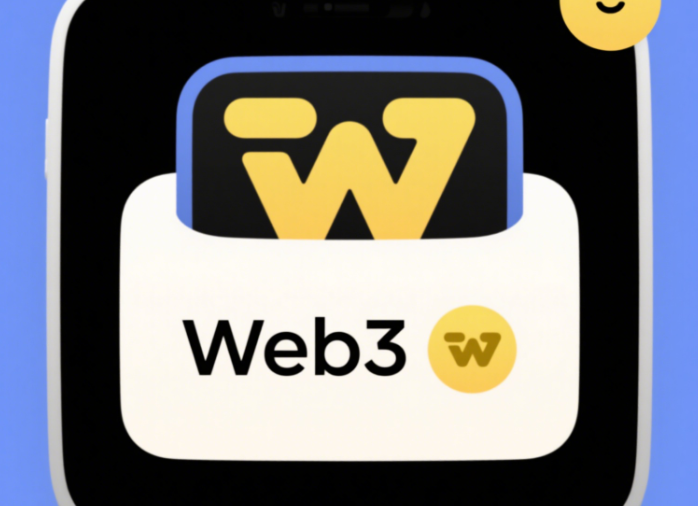In the rapidly evolving landscape of Web3, a Web3 wallet serves as your digital gateway to the decentralized economy. Unlike traditional wallets, these tools empower users to interact directly with blockchain networks, manage cryptocurrencies, and engage with decentralized applications (dApps) without intermediaries. This guide explores the core functionalities, security protocols, and future trends of Web3 wallets, offering actionable insights for beginners and experts alike.
What Is a Web3 Wallet?
A Web3 wallet is a software or hardware tool that stores cryptographic keys, enabling users to send, receive, and manage digital assets on blockchain networks. Unlike centralized platforms like PayPal or Coinbase, Web3 wallets operate without a central authority, giving users full control over their funds. Key features include:
- Decentralization: Users retain ownership of private keys, eliminating reliance on third parties.
- Multi-chain Support: Access to multiple blockchains (e.g., Ethereum, Solana, Polkadot).
- DApp Integration: Seamless interaction with decentralized exchanges (DEXs), NFT marketplaces, and DeFi protocols.
- Security: Advanced encryption and anti-phishing measures protect against hacks.
For example, MetaMask, a popular browser extension wallet, allows users to connect directly to Ethereum-based dApps, while hardware wallets like Ledger Nano X store keys offline for enhanced security .
Types of Web3 Wallets
Web3 wallets come in various forms, each tailored to different user needs:
1. Software Wallets
- Hot Wallets: Always connected to the internet (e.g., MetaMask, Trust Wallet). Ideal for frequent transactions but carry higher security risks.
- Cold Wallets: Offline storage (e.g., Ledger, Trezor). Best for long-term asset storage but less convenient for daily use.
2. Hardware Wallets
Physical devices like Ledger and Trezor provide military-grade security by storing keys offline. They’re resistant to malware and phishing attacks, making them a top choice for high-value assets .
3. Smart Contract Wallets
These wallets use self-executing code to automate transactions and enhance security. For example, Argent Wallet offers features like social recovery and spending limits, reducing reliance on traditional private keys .
4. Browser Extensions
Tools like MetaMask and Coinbase Wallet integrate directly into browsers, simplifying dApp interactions. They’re user-friendly but require careful handling of private keys .
Key Features and Use Cases
Web3 wallets are more than just storage solutions—they’re ecosystems in themselves:
1. Asset Management
- Multi-currency Support: Manage Bitcoin, Ethereum, stablecoins, and NFTs in one place.
- Staking and Yield Farming: Earn passive income by staking tokens or providing liquidity to DeFi protocols.
2. DApp Interaction
Connect directly to platforms like Uniswap (DEX), OpenSea (NFTs), and Aave (lending) to trade, invest, or participate in decentralized governance .
3. Security Protocols
- Private Key Backup: Most wallets generate a 12–24-word recovery phrase for account restoration.
- Multi-factor Authentication (MFA): Adds layers of security via biometrics or SMS verification.
- Anti-Phishing Measures: Tools like MetaMask’s built-in security alerts protect against malicious websites .
4. Cross-Chain Bridges
Wallets like OKX Wallet enable seamless asset transfers between blockchains, reducing reliance on centralized exchanges .

Security Risks and Best Practices
While Web3 wallets offer unprecedented control, they’re not immune to risks:
1. Common Threats
- Phishing Attacks: Malicious websites impersonating dApps to steal keys.
- 私钥泄露: Storing keys on unsecured devices or sharing recovery phrases.
- Smart Contract Vulnerabilities: Exploits in dApp code (e.g., the 2024 LI.FI hack that drained $11.6M ).
2. Mitigation Strategies
- Use Hardware Wallets: Store large sums offline.
- Verify URLs: Double-check dApp domains before connecting.
- Backup Keys Securely: Store recovery phrases in encrypted offline locations.
- Stay Informed: Follow security audits and updates from wallet providers like Bitget Wallet, which offers a $300M security fund .
Future Trends in Web3 Wallets
The Web3 wallet ecosystem is evolving rapidly:
1. Account Abstraction
Protocols like ERC-4337 aim to simplify wallet interactions by abstracting complex processes like gas fees and transaction signing. This could make Web3 more accessible to non-technical users .
2. AI Integration
AI-powered wallets (e.g., those using ChatGPT plugins) could automate portfolio management, risk analysis, and fraud detection .
3. Cross-Chain Interoperability
Wallets like Bitget Wallet already support 20+ blockchains, and future tools may eliminate the need for manual bridge transactions .
4. Regulatory Compliance
As governments worldwide regulate crypto, wallets may adopt KYC/AML measures while balancing user privacy .
Choosing the Right Web3 Wallet
Selecting a wallet depends on your needs:
- Security: Prioritize hardware wallets (Ledger) or smart contract wallets (Argent).
- User Experience: Browser extensions (MetaMask) or mobile apps (Trust Wallet) are ideal for beginners.
- Multi-chain Access: Opt for wallets like OKX or Bitget Wallet, which support multiple networks .
For in-depth comparisons and reviews, visit Bitora, your go-to source for Web3 wallet insights and updates.
Stay Ahead with Bitora
At Bitora, we empower users to navigate the Web3 landscape with expert analysis, security guides, and real-time market updates. Whether you’re exploring DeFi, trading NFTs, or securing your digital assets, our platform delivers actionable intelligence to help you thrive in the decentralized future. Visit Bitora to unlock the full potential of Web3.
Disclaimer: This article is for informational purposes only and does not constitute financial advice. Always research thoroughly before investing.









Leave A Reply